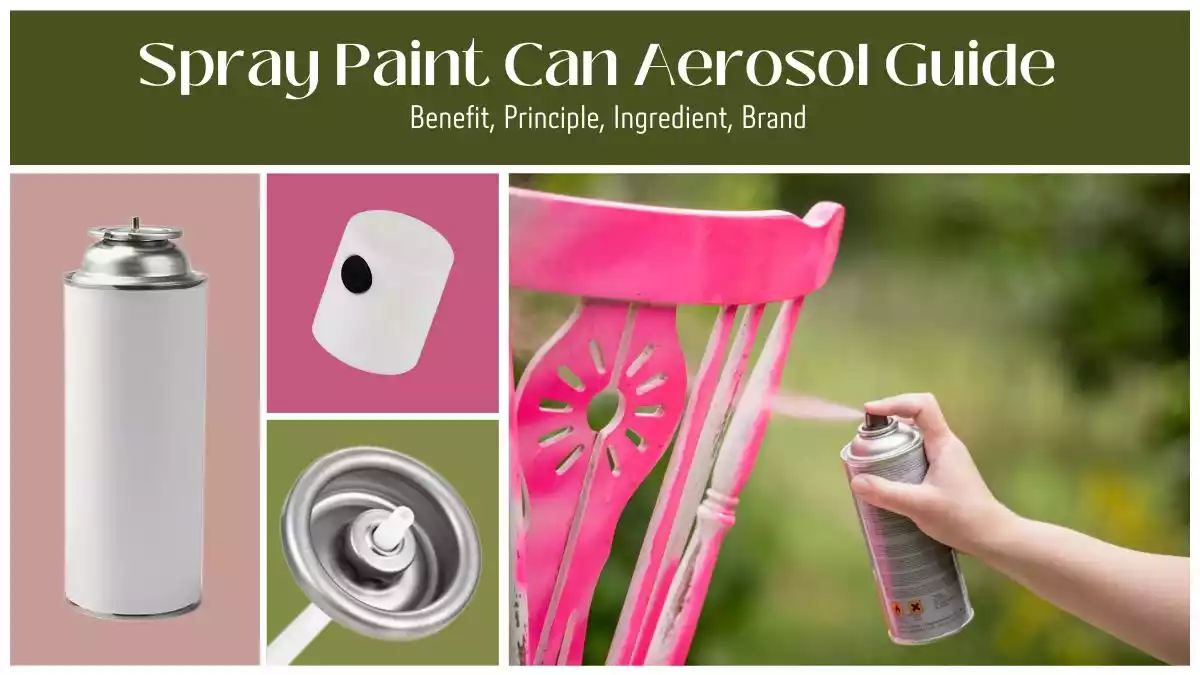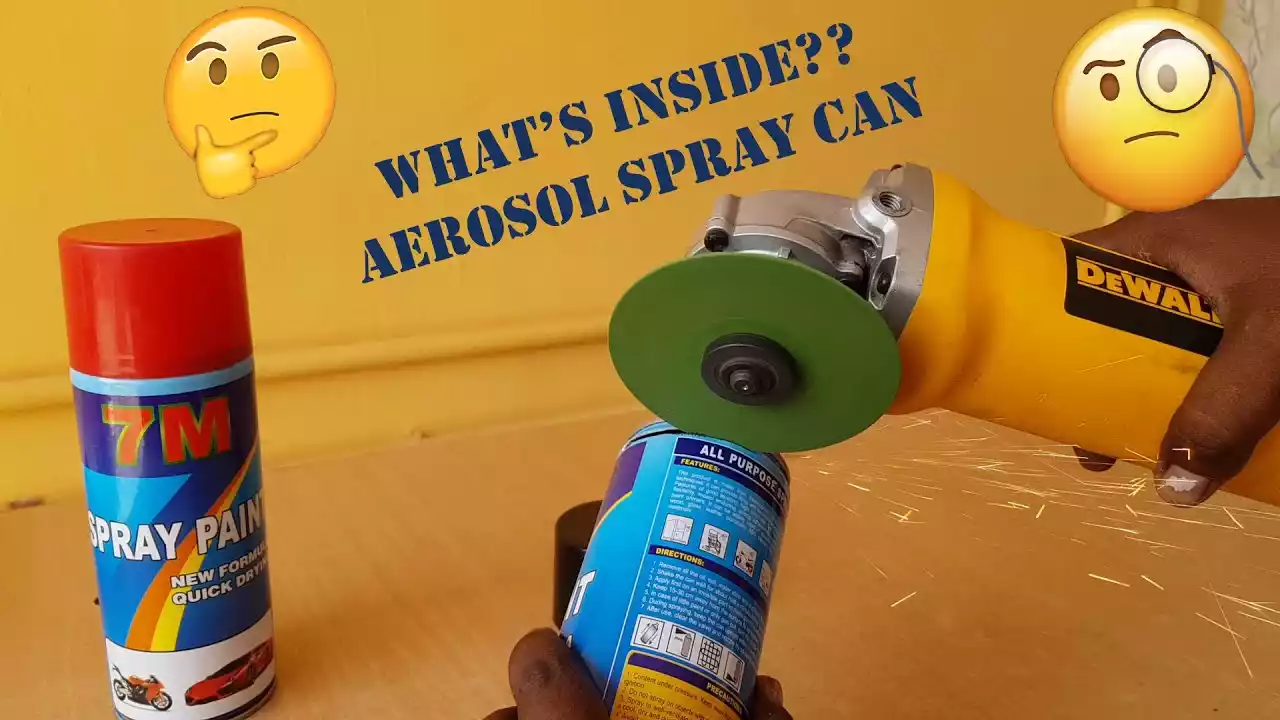The Fascination with Spray Paint
Spray paint has revolutionized the way we approach painting projects, offering a convenient and efficient method to apply paint evenly across various surfaces. From DIY enthusiasts to professional artists, spray paint has become a staple in many toolkits. But what exactly goes into that can of spray paint? Understanding the ingredients inside a spray paint can not only helps in making informed choices but also ensures safe and effective use.
Historical Context of Spray Paint
Spray paint, as we know it today, was invented in 1949 by Edward Seymour. He combined paint with a propellant in an aerosol can, creating a product that could be sprayed onto surfaces. This innovation was initially intended for applying aluminum coating to radiators but quickly found broader applications. Over the decades, spray paint has evolved, incorporating various ingredients to enhance its performance, durability, and environmental impact.
Importance of Knowing the Ingredients

Knowing the ingredients inside a spray paint can is crucial for several reasons. It helps in selecting the right product for specific applications, understanding potential health risks, and adopting proper safety measures. Additionally, awareness of the environmental impact of these ingredients can guide more eco-friendly choices.
Main Ingredients in Spray Paint
Solvents
Solvents are a key component in spray paint, responsible for dissolving the paint’s other ingredients and ensuring a smooth application.
Types of Solvents Used
• Acetone: A fast-evaporating solvent commonly used in spray paints.
• Toluene: Known for its strong dissolving power, often used in industrial-grade paints.
• Xylene: Provides a balance between evaporation rate and solvency power.
Role of Solvents in Spray Paint
Solvents play a vital role in the application process. They keep the paint in a liquid state, allowing it to be sprayed evenly. Once applied, the solvents evaporate, leaving behind a solid layer of paint. The evaporation rate of the solvent affects the drying time and finish of the paint.
Pigments
Pigments give spray paint its color and opacity. They can be natural or synthetic, each offering different properties.
Natural vs. Synthetic Pigments
• Natural Pigments: Derived from minerals and plants, offering earthy tones.
• Synthetic Pigments: Man-made, providing a broader range of vibrant colors.
How Pigments Affect Color and Finish
Pigments determine the color, opacity, and finish of the paint. High-quality pigments result in more vibrant and durable colors. The type and amount of pigment used can also affect the paint’s coverage and resistance to fading.
Resins
Resins act as binders, holding the pigment particles together and adhering them to the painted surface.
Types of Resins
• Acrylic Resins: Known for their durability and flexibility.
• Alkyd Resins: Provide a hard, glossy finish.
• Epoxy Resins: Offer excellent adhesion and chemical resistance.
Function of Resins in Spray Paint
Resins determine the paint’s adhesion, durability, and finish. They form a protective layer over the pigment, enhancing the paint’s resistance to wear and environmental factors.
Additional Components

Propellants
Propellants are the gases that push the paint out of the can, creating a fine mist for even application.
Common Propellants Used
• Propane: A common propellant in many aerosol products.
• Butane: Often used in combination with propane.
• Dimethyl Ether (DME): Provides a consistent spray pattern.
Environmental Impact of Propellants
Propellants can have a significant environmental impact. Many traditional propellants contribute to air pollution and ozone depletion. However, newer formulations aim to reduce these effects by using more eco-friendly alternatives.
Additives
Additives are included to enhance the performance and properties of the spray paint.
Types of Additives
• Anti-settling Agents: Prevent pigments from settling at the bottom of the can.
• UV Stabilizers: Protect the paint from fading due to sunlight exposure.
• Anti-corrosion Agents: Enhance the paint’s resistance to rust and corrosion.
Purpose of Additives in Spray Paint
Additives improve the paint’s stability, durability, and overall performance. They ensure a consistent application and long-lasting finish, even under challenging conditions.
Health and Safety Concerns
Toxicity of Ingredients
Spray paint contains various chemicals that can pose health risks if not handled properly.
Short-term Health Effects
• Inhalation: Can cause dizziness, headaches, and respiratory irritation.
• Skin Contact: May lead to irritation or allergic reactions.
• Eye Contact: Can result in redness, irritation, or more severe damage.
Long-term Health Effects
• Chronic Exposure: Prolonged exposure to certain solvents and additives can lead to more serious health issues, including respiratory problems, liver and kidney damage, and even cancer.
Safety Measures
Protective Gear
• Respirators: Essential for protecting the lungs from inhaling harmful fumes.
• Gloves: Prevent skin contact with the paint.
• Safety Goggles: Protect the eyes from splashes and fumes.
Proper Ventilation
• Outdoor Use: Whenever possible, use spray paint outdoors to minimize inhalation risks.
• Ventilated Areas: If working indoors, ensure the area is well-ventilated with fans or open windows.
Environmental Impact
Eco-friendly Alternatives
Water-based Spray Paints
Water-based spray paints use water as the primary solvent, reducing the emission of volatile organic compounds (VOCs). They are less toxic and have a lower environmental impact compared to traditional solvent-based paints.
Low-VOC Formulations
Low-VOC spray paints are designed to release fewer harmful chemicals into the air. They are a safer option for both the user and the environment.
Disposal of Spray Paint Cans
Recycling Options
• Empty Cans: Many recycling programs accept empty aerosol cans. Ensure the can is completely empty before recycling.
• Special Programs: Some manufacturers offer take-back programs for used spray paint cans.
Hazardous Waste Disposal
• Partially Full Cans: Should be taken to a hazardous waste disposal facility.
• Local Regulations: Always follow local guidelines for disposing of hazardous materials.
Practical Tips for Using Spray Paint
Preparation of the Surface
Cleaning and Sanding
• Remove Dirt and Grease: Clean the surface thoroughly to ensure proper adhesion.
• Sand Rough Areas: Smooth out any imperfections for a flawless finish.
Priming the Surface
• Use a Primer: Apply a suitable primer to enhance adhesion and coverage.
• Drying Time: Allow the primer to dry completely before applying the spray paint.
Application Techniques
Distance and Angle
• Optimal Distance: Hold the can about 6-12 inches from the surface.
• Consistent Angle: Maintain a consistent angle to ensure even coverage.
Multiple Coats and Drying Time
• Thin Coats: Apply several thin coats rather than one thick coat.
• Drying Time: Allow each coat to dry before applying the next.
Common Mistakes to Avoid
Improper Surface Preparation
Skipping Cleaning
• Adhesion Issues: Dirt and grease can prevent the paint from adhering properly.
Not Using Primer
• Poor Coverage: Skipping primer can result in uneven coverage and reduced durability.
Application Errors
Spraying Too Close
• Drips and Runs: Holding the can too close can cause the paint to drip and run.
Not Shaking the Can Properly
• Uneven Color: Failing to shake the can thoroughly can lead to uneven color and texture.
Variations in Spray Paint
Acrylic vs. Enamel Spray Paints
Differences in Composition
• Acrylic Paints: Water-based, quick-drying, and flexible.
• Enamel Paints: Oil-based, durable, and glossy.
Best Uses for Each Type
• Acrylic Paints: Ideal for indoor projects and surfaces that require flexibility.
• Enamel Paints: Suitable for outdoor projects and surfaces that need a hard, durable finish.
Specialty Spray Paints
Metallic and Fluorescent Paints
• Metallic Paints: Contain metallic flakes for a shiny, reflective finish.
• Fluorescent Paints: Bright, neon colors that glow under UV light.
Heat-resistant and Waterproof Paints
• Heat-resistant Paints: Designed to withstand high temperatures, ideal for grills and engines.
• Waterproof Paints: Provide a waterproof barrier, suitable for outdoor furniture and marine applications.
FAQs
What are the main ingredients in spray paint?
Spray paint typically contains solvents, pigments, resins, propellants, and additives. Solvents dissolve the other ingredients and ensure smooth application. Pigments provide color and opacity, while resins act as binders, holding the pigment particles together and adhering them to the surface. Propellants are gases that push the paint out of the can, creating a fine mist. Additives enhance the paint’s performance and properties, such as anti-settling agents, UV stabilizers, and anti-corrosion agents.
How do solvents in spray paint affect its performance?
Solvents play a crucial role in the performance of spray paint. They keep the paint in a liquid state, allowing it to be sprayed evenly. Once applied, the solvents evaporate, leaving behind a solid layer of paint. The evaporation rate of the solvent affects the drying time and finish of the paint. Fast-evaporating solvents like acetone result in quick drying times, while slower-evaporating solvents like xylene provide a smoother finish. The choice of solvent also impacts the paint’s adhesion, durability, and resistance to environmental factors.
Are there eco-friendly spray paint options available?
Yes, there are eco-friendly spray paint options available. Water-based spray paints use water as the primary solvent, reducing the emission of volatile organic compounds (VOCs). They are less toxic and have a lower environmental impact compared to traditional solvent-based paints. Low-VOC spray paints are designed to release fewer harmful chemicals into the air, making them a safer option for both the user and the environment. Additionally, some manufacturers offer spray paints with biodegradable or recyclable packaging to further reduce environmental impact.
What safety measures should I take when using spray paint?
When using spray paint, it’s essential to take safety measures to protect yourself from potential health risks. Wear a respirator to protect your lungs from inhaling harmful fumes. Use gloves to prevent skin contact with the paint, and safety goggles to protect your eyes from splashes and fumes. Always work in a well-ventilated area, preferably outdoors. If working indoors, ensure the area is well-ventilated with fans or open windows. Follow the manufacturer’s instructions and safety guidelines on the spray paint can.
How should I dispose of empty spray paint cans?
Disposing of empty spray paint cans properly is important for environmental safety. Many recycling programs accept empty aerosol cans. Ensure the can is completely empty before recycling. Some manufacturers offer take-back programs for used spray paint cans. For partially full cans, take them to a hazardous waste disposal facility. Always follow local guidelines for disposing of hazardous materials. Never puncture or incinerate spray paint cans, as they can explode and release harmful chemicals into the environment.
Relevant Data Table
Main Ingredients in Spray Paint
| Ingredient | Function | Examples |
|---|---|---|
| Solvents | Dissolve other ingredients, ensure smooth application | Acetone, Toluene, Xylene |
| Pigments | Provide color and opacity | Natural Pigments, Synthetic Pigments |
| Resins | Act as binders, enhance adhesion and durability | Acrylic Resins, Alkyd Resins, Epoxy Resins |
| Propellants | Push the paint out of the can, create a fine mist | Propane, Butane, Dimethyl Ether (DME) |
| Additives | Enhance performance and properties | Anti-settling Agents, UV Stabilizers, Anti-corrosion Agents |
Eco-friendly Alternatives
| Type | Benefits | Examples |
|---|---|---|
| Water-based Spray Paints | Less toxic, lower environmental impact | Water-based Acrylic Paints |
| Low-VOC Formulations | Release fewer harmful chemicals | Low-VOC Enamel Paints |
Conclusion
Understanding the ingredients inside a spray paint can is essential for making informed choices, ensuring safety, and minimizing environmental impact. From solvents and pigments to resins and additives, each component plays a crucial role in the performance and properties of the paint. By being aware of these ingredients, you can select the right product for your needs, adopt proper safety measures, and contribute to a more sustainable future.
Ruth Aquilani is a renowned graffiti artist known for her bold, colorful, and expressive style. She began her career as a street artist in the early 2000s, quickly making a name for herself in the graffiti community with her unique and striking works of art.

[…] professional painter faced with hardened spray paint decided to experiment with different thinners. By carefully selecting a thinner compatible with the […]